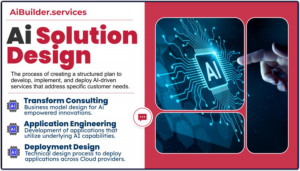Choose the Right AI Model for Your Use Case
A systematic guide to selecting an appropriate AI model by balancing performance, efficiency, and constraints like resources and interpretability.
 Selecting the right AI model for a given task requires a thoughtful and systematic approach that balances performance, efficiency, and practical constraints.
Selecting the right AI model for a given task requires a thoughtful and systematic approach that balances performance, efficiency, and practical constraints.
The first step is to clearly define the problem and objectives. This involves articulating the specific task, whether it’s classification, regression, or generation, and identifying the success metrics, such as accuracy, F1 score, or latency.
Understanding the domain-specific requirements, like the need for interpretability in fields such as healthcare or finance, is equally critical to ensure the model aligns with the intended use case.
A thorough understanding of the dataset is essential before choosing a model. The size, quality, and complexity of the data—whether it’s structured or unstructured, noisy or clean—play a significant role in model selection.
For example, convolutional neural networks are well-suited for image data, while transformers excel with text. It’s also important to check for biases or imbalances in the data that could affect performance and to ensure the model is compatible with the data’s characteristics.
When selecting a model, the complexity should match the task and dataset. Starting with simpler models, like logistic regression or decision trees, provides a baseline, especially for smaller datasets where complex models might overfit.
For larger datasets with intricate patterns, more advanced models, such as deep learning architectures or ensemble methods, may be appropriate. However, interpretability should be prioritized in domains where explainability is crucial, and overly complex models should be avoided if they risk overfitting or are impractical for deployment.
Performance evaluation is another key consideration. Metrics should align with the task, such as precision and recall for imbalanced classification or RMSE for regression. Cross-validation helps assess how well a model generalizes, and benchmarking multiple models allows for a comparison of trade-offs.
Resource constraints, including computational power, memory, and inference time, must also be factored in, particularly for deployment on edge devices or in cost-sensitive, large-scale applications.
Leveraging pre-trained models can significantly enhance efficiency, especially when data is limited. Transfer learning with models like BERT or ResNet, followed by fine-tuning on domain-specific data, can save time and improve performance. Incorporating domain knowledge, such as rule-based features or physics-informed neural networks, further refines model relevance, and validating assumptions with domain experts ensures alignment with real-world needs.
Experimentation and iteration are critical for refining model selection. Tools like AutoML or hyperparameter tuning methods, such as grid search or Bayesian optimization, can streamline the exploration of model configurations.
Testing various architectures, from support vector machines to neural networks, and considering ensemble methods can uncover the best fit. In dynamic environments, monitoring for concept drift and planning for retraining are necessary to maintain performance over time.
Finally, ensuring robustness and fairness is vital. Models should be tested for resilience against adversarial inputs or data shifts, and fairness evaluations can help mitigate biases across protected groups, such as those based on gender or ethnicity. Techniques like SHAP or LIME can enhance interpretability when needed. For deployment, models must be compatible with the target platform, with considerations for size, latency, and update frequency.
Documenting the selection process fosters reproducibility and collaboration, ensuring the chosen model is both effective and practical for the task at hand.

